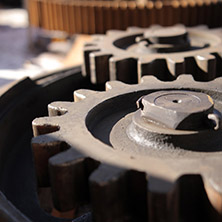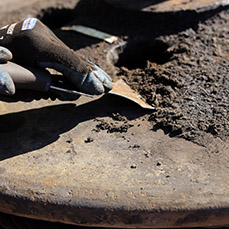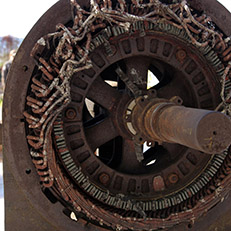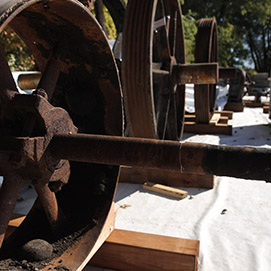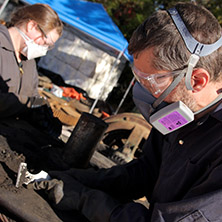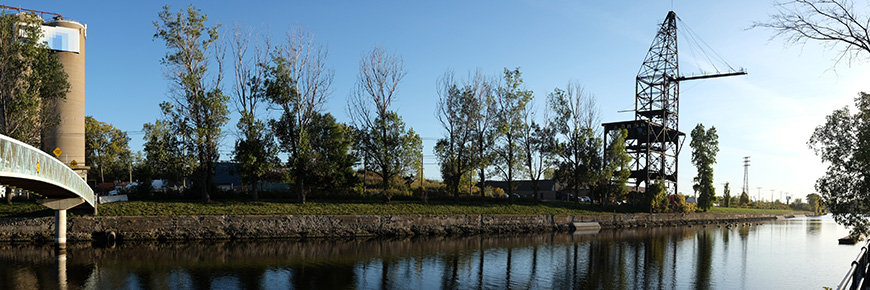
The LaSalle Coke crane: a remnant of Montreal's industrialization
Lachine Canal National Historic Site
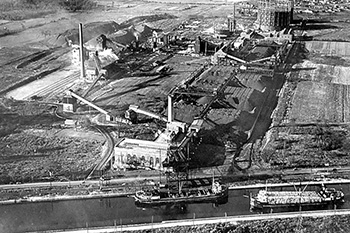
calendrier/fev/28.htm
The LaSalle-Coke crane, built between 1914 and 1916 and located in the Borough of LaSalle in Montreal, is an offloading tower used by the gas manufacturing plant of the Montreal Light, Heat and Power Company. Nearly 50 metres in height, this massive structure is entirely made of steel fully assembled with rivets.
The crane and its various components were not only used to unload the coal that supplied the plant, but were used to raise coal to the level of an elevated railway line and also as a departure point of a conveyor for the transport of coal on the railway line to the plant. Functional until 1967, this crane is one of the last vestiges of the period of commercial shipping related to the industries of the Lachine Canal that ended in 1970 and is one of the only coal offloading cranes remaining in the world today.
The LaSalle-Coke crane is comprised of four large segments that can still be seen today: the lower tower, the upper tower, the boom and the runway.
The restoration of this historic landmark
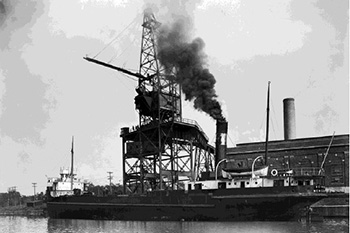
In October 2017, Parks Canada began treatment work on the dismantled parts. Although the LaSalle-Coke crane is a structure related to the Lachine Canal National Historic Site, the restoration of its mechanical components will be done in the workshops of the Chambly Canal NHS, since it is the only Parks Canada facility that meets the requirements of space and safety.
The treatment and complete restoration of these parts is intended to improve the state and stability of this historic structure in order to significantly increase its useful life, ensure public safety and provide Canadians with enhanced access to their cultural heritage.
Treatment of the parts of the crane
After being dismantled, the parts of the crane first had to be catalogued. An individual inventory number was thus assigned to each of them. It is critical to know how they fit together since they form part of a complete mechanical assembly. Once the inventory was completed, the physical treatment of the parts was done.
- The first stage of the physical treatment is to remove the deposits of oil and grease from the surfaces. This reveals the original finishes that were still present and exposes the areas that are affected by corrosion. The surfaces are treated using abrasive pads that are non-corrosive and fitted with stainless steel wire brushes.
- The second step is to neutralize corrosion products and work on the painted surfaces to maintain the finish.
- The third step is to apply a protective coating to the surfaces in order to protect them from the elements and contaminants that cause corrosion. The coating used is similar to an automobile anti-rust product. This product is used at a number of sites on industrial heritage components.
Photo Gallery
- Date modified :

